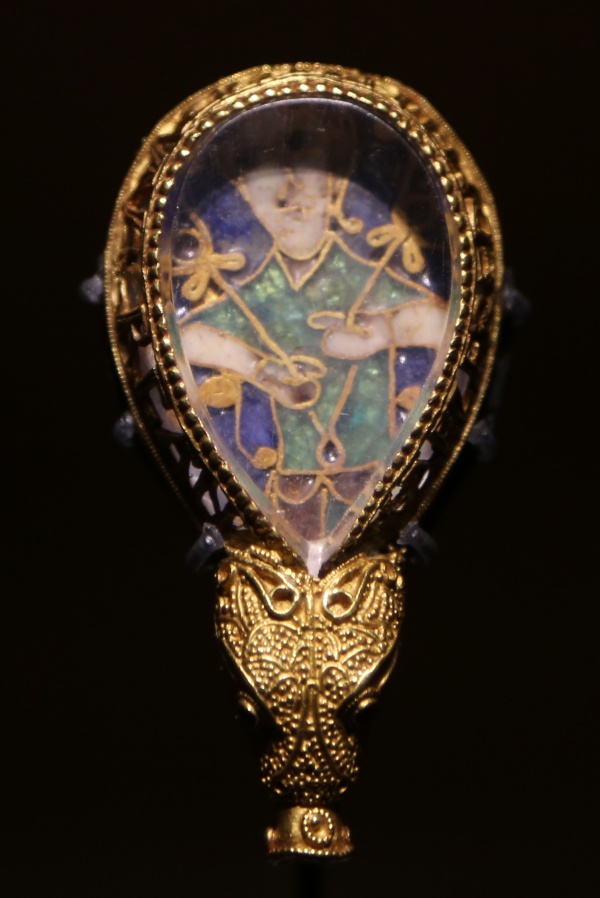Facts About Alfred Jewel
The Alfred Jewel is a remarkable example of Anglo-Saxon craftsmanship, discovered in 1693 in North Petherton, Somerset, England. This captivating artifact is currently housed at the Ashmolean Museum in Oxford. Dating back to the late 9th century, during the reign of Alfred the Great, it carries the inscription "AELFRED MEC HEHT GEWYRCAN" which translates to "Alfred ordered me made." Although its exact function remains a subject of scholarly debate, it is widely believed that the jewel may have served as a handle for a reading pointer.
The jewel itself is a masterpiece crafted from filigreed gold, featuring a clear quartz crystal, a cloisonné enamel plaque, and a notable inscription. The enamel plaque depicts a figure often thought to represent Christ or Wisdom, while the back of the jewel is intricately engraved with a plant motif, possibly symbolizing the Tree of Life. Discovered at Petherton Park, the Alfred Jewel was eventually bequeathed to Oxford University. Today, replicas of the jewel can be found in various locations, including St. Mary's Church in North Petherton and the Blake Museum in Bridgwater.
Interestingly, other similar objects have been found, such as the Minster Lovell Jewel, Warminster Jewel, Bowleaze Jewel, Yorkshire Aestel, Borg Aestel, and Bidford Bobble. These artifacts were even exhibited together in Winchester in 2008. Some scholars speculate that the figure on the Alfred Jewel might represent Alexander the Great, linking it to medieval legends and iconography.
The Alfred Jewel has left an indelible mark on culture, appearing in literature, music, and television. It is used as an emblem by the Early English Text Society and as a logo by the Society for Medieval Archaeology. The jewel appears as a motif in works such as Nancy Mitford's "The Pursuit of Love" and Susan Cooper's "The Dark is Rising." It is also referenced in music by Roy Harper and in television series like Inspector Morse and Detectorists.

 Ireland
Ireland